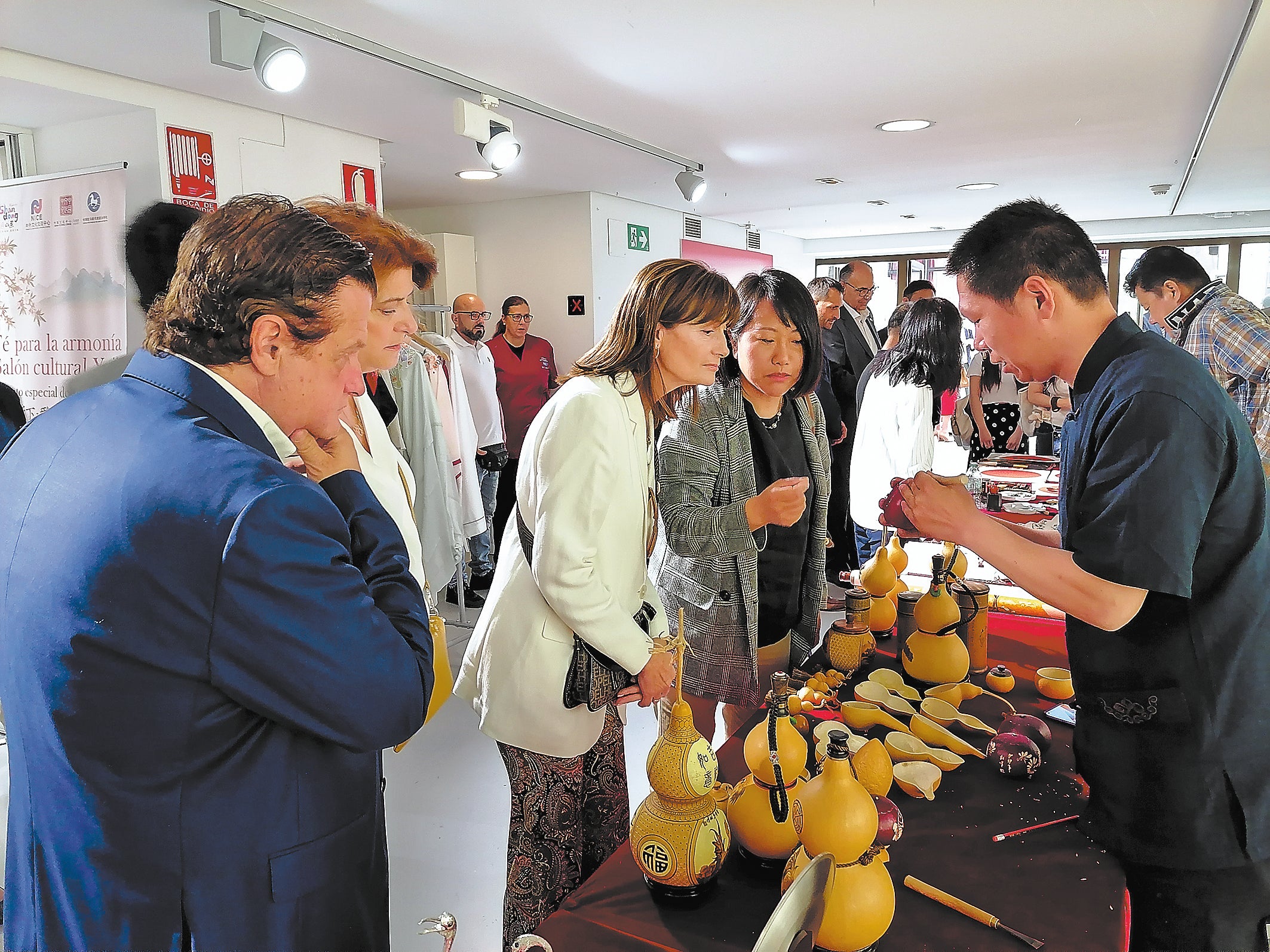Walking through the bustling markets in autumn, the gourd harvest season in Dongchangfu district of Liaocheng, Shandong province, one is greeted by a vivid display of the fruit in various shapes and artistic forms.
Alongside unadorned pieces and finely carved traditional works are rare varieties such as the crane-head gourd. Yet, the real sign of the times lies in the emergence of cultural and creative products made from gourds, like gourd-themed backpacks, fridge magnets and storage jars, integrating this ancient craft into contemporary daily life.
Local records trace gourd cultivation in Dongchangfu back to the Han Dynasty (206 BC-AD 220), with refined processing techniques developing during the Song Dynasty (960-1279).
The Ming (1368-1644) and Qing (1644-1911) dynasties brought a golden age, as the busy trade along the Beijing-Hangzhou Grand Canal, which passes through the district, infused the local craft with diverse influences — southern delicacy, northern boldness and exotic motifs.

This long and rich heritage earned Dongchang gourd carving recognition as a national intangible cultural heritage in 2008. But rather than remaining frozen in time, the craft continues to evolve dynamically.
Today, the district’s gourd cultivation covers over 4,900 acres, involving more than 5,000 farming households. It commands 75 per cent of the domestic market, generating annual gross revenues of 2.6 billion yuan (£278.8 million), according to Liaocheng city authorities.
A new generation is ensuring that this centuries-old craft not only survives but thrives.
Among them is Hao Hongle, the first university graduate in his village to return home, having studied business at a university in Chongqing and graduated in 2013.
The 35-year-old initially worked as a sales manager in Hubei province but returned to Luzhuang village in Tangyi town in 2014 to be closer to his parents. Upon returning, he joined the local gourd trade, which was then limited to four or five traditional varieties.
In 2018, Hao visited Tianjin to explore market trends and encountered a special gourd variety.
“This gourd is only as long as a finger, with a well-proportioned shape and smooth skin that develops a fine patina easily — highly sought-after among collectors. What’s more, it yields abundantly and offers better returns,” says Hao.
Hao brought the gourd back home, carefully extracted its seeds, and began cultivating it on a small plot of his family’s land.
Through soil improvement, optimised irrigation and precise light control, Hao significantly enhanced the quality of his gourds. Today, a single vine can produce over 100 gourds, of which around 20 are of premium quality.
“A high-grade gourd sells for 25 yuan (£2.7), and an ordinary one for 2.5 yuan (£0.27),” he says.
His success has inspired many villagers to learn his cultivation techniques, and his fields now serve as demonstration plots.
Dongchangfu district has established a gourd variety protection and improvement team, collaborating with scientific research institutions such as the Shandong Academy of Agricultural Sciences and Liaocheng University. Together, they have refined 17 local gourd varieties and developed more than 10 new ones.
High-quality gourds have provided materials for artistic expression.
“A wide range of topics like landscapes and images can be carved on gourds,” says Wang Shufeng, director of the Liaocheng gourd cultural industry association and a provincial-level inheritor of Dongchang gourd carving.
Wang, who studied under national-level inheritor Li Yucheng, now passes on his craft through free training courses that have nurtured three city and five district-level inheritors.
To further promote the inheritance of this art, the district has set up dedicated craft workshops staffed with professional instructors. This initiative has trained over 3,300 local artisans, ensuring that skills continue to flourish.
In one such workshop in Mishi Street, Liu Jinghui, 35, uses soft clay to adorn gourds with pop-culture figures — from the animated hero Nezha to trendy toys like Labubu.
“Traditional pieces attract collectors, but I want gourds to be part of young people’s daily lives,” she says.

